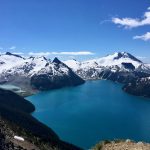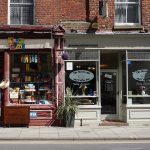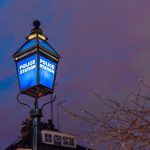4.4: Reading/Listening 2- पीटर का शहर
- Page ID
- 120270
\( \newcommand{\vecs}[1]{\overset { \scriptstyle \rightharpoonup} {\mathbf{#1}} } \)
\( \newcommand{\vecd}[1]{\overset{-\!-\!\rightharpoonup}{\vphantom{a}\smash {#1}}} \)
\( \newcommand{\id}{\mathrm{id}}\) \( \newcommand{\Span}{\mathrm{span}}\)
( \newcommand{\kernel}{\mathrm{null}\,}\) \( \newcommand{\range}{\mathrm{range}\,}\)
\( \newcommand{\RealPart}{\mathrm{Re}}\) \( \newcommand{\ImaginaryPart}{\mathrm{Im}}\)
\( \newcommand{\Argument}{\mathrm{Arg}}\) \( \newcommand{\norm}[1]{\| #1 \|}\)
\( \newcommand{\inner}[2]{\langle #1, #2 \rangle}\)
\( \newcommand{\Span}{\mathrm{span}}\)
\( \newcommand{\id}{\mathrm{id}}\)
\( \newcommand{\Span}{\mathrm{span}}\)
\( \newcommand{\kernel}{\mathrm{null}\,}\)
\( \newcommand{\range}{\mathrm{range}\,}\)
\( \newcommand{\RealPart}{\mathrm{Re}}\)
\( \newcommand{\ImaginaryPart}{\mathrm{Im}}\)
\( \newcommand{\Argument}{\mathrm{Arg}}\)
\( \newcommand{\norm}[1]{\| #1 \|}\)
\( \newcommand{\inner}[2]{\langle #1, #2 \rangle}\)
\( \newcommand{\Span}{\mathrm{span}}\) \( \newcommand{\AA}{\unicode[.8,0]{x212B}}\)
\( \newcommand{\vectorA}[1]{\vec{#1}} % arrow\)
\( \newcommand{\vectorAt}[1]{\vec{\text{#1}}} % arrow\)
\( \newcommand{\vectorB}[1]{\overset { \scriptstyle \rightharpoonup} {\mathbf{#1}} } \)
\( \newcommand{\vectorC}[1]{\textbf{#1}} \)
\( \newcommand{\vectorD}[1]{\overrightarrow{#1}} \)
\( \newcommand{\vectorDt}[1]{\overrightarrow{\text{#1}}} \)
\( \newcommand{\vectE}[1]{\overset{-\!-\!\rightharpoonup}{\vphantom{a}\smash{\mathbf {#1}}}} \)
\( \newcommand{\vecs}[1]{\overset { \scriptstyle \rightharpoonup} {\mathbf{#1}} } \)
\( \newcommand{\vecd}[1]{\overset{-\!-\!\rightharpoonup}{\vphantom{a}\smash {#1}}} \)
\(\newcommand{\avec}{\mathbf a}\) \(\newcommand{\bvec}{\mathbf b}\) \(\newcommand{\cvec}{\mathbf c}\) \(\newcommand{\dvec}{\mathbf d}\) \(\newcommand{\dtil}{\widetilde{\mathbf d}}\) \(\newcommand{\evec}{\mathbf e}\) \(\newcommand{\fvec}{\mathbf f}\) \(\newcommand{\nvec}{\mathbf n}\) \(\newcommand{\pvec}{\mathbf p}\) \(\newcommand{\qvec}{\mathbf q}\) \(\newcommand{\svec}{\mathbf s}\) \(\newcommand{\tvec}{\mathbf t}\) \(\newcommand{\uvec}{\mathbf u}\) \(\newcommand{\vvec}{\mathbf v}\) \(\newcommand{\wvec}{\mathbf w}\) \(\newcommand{\xvec}{\mathbf x}\) \(\newcommand{\yvec}{\mathbf y}\) \(\newcommand{\zvec}{\mathbf z}\) \(\newcommand{\rvec}{\mathbf r}\) \(\newcommand{\mvec}{\mathbf m}\) \(\newcommand{\zerovec}{\mathbf 0}\) \(\newcommand{\onevec}{\mathbf 1}\) \(\newcommand{\real}{\mathbb R}\) \(\newcommand{\twovec}[2]{\left[\begin{array}{r}#1 \\ #2 \end{array}\right]}\) \(\newcommand{\ctwovec}[2]{\left[\begin{array}{c}#1 \\ #2 \end{array}\right]}\) \(\newcommand{\threevec}[3]{\left[\begin{array}{r}#1 \\ #2 \\ #3 \end{array}\right]}\) \(\newcommand{\cthreevec}[3]{\left[\begin{array}{c}#1 \\ #2 \\ #3 \end{array}\right]}\) \(\newcommand{\fourvec}[4]{\left[\begin{array}{r}#1 \\ #2 \\ #3 \\ #4 \end{array}\right]}\) \(\newcommand{\cfourvec}[4]{\left[\begin{array}{c}#1 \\ #2 \\ #3 \\ #4 \end{array}\right]}\) \(\newcommand{\fivevec}[5]{\left[\begin{array}{r}#1 \\ #2 \\ #3 \\ #4 \\ #5 \\ \end{array}\right]}\) \(\newcommand{\cfivevec}[5]{\left[\begin{array}{c}#1 \\ #2 \\ #3 \\ #4 \\ #5 \\ \end{array}\right]}\) \(\newcommand{\mattwo}[4]{\left[\begin{array}{rr}#1 \amp #2 \\ #3 \amp #4 \\ \end{array}\right]}\) \(\newcommand{\laspan}[1]{\text{Span}\{#1\}}\) \(\newcommand{\bcal}{\cal B}\) \(\newcommand{\ccal}{\cal C}\) \(\newcommand{\scal}{\cal S}\) \(\newcommand{\wcal}{\cal W}\) \(\newcommand{\ecal}{\cal E}\) \(\newcommand{\coords}[2]{\left\{#1\right\}_{#2}}\) \(\newcommand{\gray}[1]{\color{gray}{#1}}\) \(\newcommand{\lgray}[1]{\color{lightgray}{#1}}\) \(\newcommand{\rank}{\operatorname{rank}}\) \(\newcommand{\row}{\text{Row}}\) \(\newcommand{\col}{\text{Col}}\) \(\renewcommand{\row}{\text{Row}}\) \(\newcommand{\nul}{\text{Nul}}\) \(\newcommand{\var}{\text{Var}}\) \(\newcommand{\corr}{\text{corr}}\) \(\newcommand{\len}[1]{\left|#1\right|}\) \(\newcommand{\bbar}{\overline{\bvec}}\) \(\newcommand{\bhat}{\widehat{\bvec}}\) \(\newcommand{\bperp}{\bvec^\perp}\) \(\newcommand{\xhat}{\widehat{\xvec}}\) \(\newcommand{\vhat}{\widehat{\vvec}}\) \(\newcommand{\uhat}{\widehat{\uvec}}\) \(\newcommand{\what}{\widehat{\wvec}}\) \(\newcommand{\Sighat}{\widehat{\Sigma}}\) \(\newcommand{\lt}{<}\) \(\newcommand{\gt}{>}\) \(\newcommand{\amp}{&}\) \(\definecolor{fillinmathshade}{gray}{0.9}\)पीटर का शहर “Peter’s Hometown”

Vocabulary
 |
 |
 |
| सड़क n.f. Road | राजमार्ग n.m. Highway | बस अड्डा n.m. Bus station |
 |
 |
 |
| रेलवे स्टेशन n.m. Railway station | हवाईअड्डा n.m. Airport | नदी n.f. River |
 |
 |
 |
| तालाब n.m. Pond | झील n.f. Lake | पहाड़ n.m. Mountain |
 |
 |
 |
| सिनेमा घर n.m. Cinema hall | बैंक n.m. Bank | मैदान n.m. Sports field |
 |
 |
 |
| बाज़ार n.m. Market | दुकान n.f. Shop | भोजनालय n.m. Restaurant |
 |
 |
 |
| होटल n.m. Hotel | भवन n.m./इमारत n.f. Building | अस्पताल n.m. Hospital |
 |
 |
 |
| कार्यालय n.m. Office | डाकघर n.m. Post office | पुलिस थाना n.m. Police station |
 |
 |
 |
| चिड़ियाघर n.m. Zoo | पुस्तकालय n.m. Library | संग्रहालय n.m. Museum |
 |
 |
 |
| पुल n.m. Bridge | मॉल n.m. Shopping mall | स्कूल/ विद्यालय n.m. School |
 |
 |
 |
| विश्वविद्यालय n.m. University | कॉलेज/महाविद्यालय n.m. College | पेट्रोल पम्प n.m. Gas station |
Test Yourself
https://openbooks.lib.msu.edu/ll151/?p=853
Reading/Listening
Context: Hritik is talking to Peter about his home town “Iowa City.”
Pre-Reading Activities
Please read the following word, then write their meaning in English. After that please respond to the prompts.
| Hindi | English | Do you have this in your town/city | How many | |
| 1 | विद्यालय | School | जी हाँ | 5 |
| 2 | महाविद्यालय | |||
| 3 | विश्वविद्यालय | |||
| 4 | अस्पताल | |||
| 5 | डाकघर | |||
| 6 | पुलिस थाना | |||
| 7 | संग्रहालय | |||
| 8 | नदी | |||
| 9 | झील | |||
| 10 | तालाब | |||
| 11 | पहाड़ | |||
| 12 | पुस्तकालय |
Reading
| Hindi | English | |
| पीटर: | ऋतिक भाई, आप कहाँ से हैं ? | Brother Hritik, where are you from? |
| ऋतिक: | मैं पटना, हिन्दुस्तान से हूँ | आप कहाँ से हैं ? | I am from Patna, India. Where are you from? |
| पीटर: | मैं आयोवा के एक छोटे शहर आयोवा सिटी से हूँ | पटना, बिहार की राजधानी है, न ? | I am from a small town Iowa City, Iowa. Patna is the capital of Bihar, isn’t it? |
| ऋतिक: | जी हाँ, मैं बिहारी हूँ | आयोवा सिटी की जनसंख्या कितनी है ? | Yes, I am a Bihari. What is the population of Iowa City? |
| पीटर: | आयोवा सिटी में लगभग पचहतर हज़ार लोग रहते हैं | और पटना में ? | Approx 75 thousand people live in Iowa City. And in Patna? |
| ऋतिक | पटना में लगभग, पचीस लाख लोग रहते हैं | शायद, आयोवा सिटी बहुत छोटा शहर है | | Approx, 2.5 million people live in Patna. Perhaps, Iowa City is a very small town. |
| पीटर: | हाँ, आयोवा सिटी बहुत छोटा, मगर बहुत प्यारा शहर है | | Yes, Iowa City is very small, but very lovely town. |
| ऋतिक: | क्या वहाँ कोई हवाई अड्डा है ? | Is there any airport there? |
| पीटर: | नहीं, मगर पास के शहर सीडर रैपिड्स में एक हवाई अड्डा है | आयोवा सिटी में रेलवे स्टेशन भी नहीं है | हाँ, एक बस स्टेशन है | | No, but there is an airport in near by town. Even railway station is not there in Iowa City. There is just one bus station. |
| ऋतिक: | आयोवा सिटी में, कितने विद्यालय, महाविद्यालय, और विश्वविद्यालय हैं| | How many schools, colleges, and universities are there in Iowa CIty? |
| पीटर: | मेरे शहर में, दो विद्यालय, एक महाविद्यालय, और एक विश्वविद्यालय है | | In my town, there are two schools, one college, and one university. |
| ऋतिक: | क्या आपके शहर में पुस्तकालय, संग्रहालय, सिनेमा घर, और चिड़ियाघर है ? | Is there any library, museum, cinema hall and zoo in your town? |
| पीटर: | जी हाँ, मेरे शहर में, दो पुस्तकालय, एक संग्रहालय, एक सिनेमाघर भी है | मगर चिड़ियाघर नहीं है | | Yes, in my town, there are two libraries, one museum, one cinema hall. But, there is no zoo. |
| ऋतिक: | अच्छा, क्या आयोवा सिटी में, कोई नदी, झील, तालब और पहाड़ हैं | | Okay, Is there any river, lake, pond and mountain in Iowa City? |
| पीटर: | मेरे शहर में, एक नदी, और कुछ तालाब हैं| वहाँ पहाड़ नहीं है | आयोवा एक कृषि प्रधान राज्य है और वहाँ बहुत समतल ज़मीन और खेत हैं | | In my town, there is a river and a few ponds. There is no mountain there. Iowa is an agriculture based state and there is a lot of even and farm land. |
| ऋतिक: | क्या आपके शहर में, डाकघर, और पुलिस थाना आदि हैं ? | In your town, is there a post office, and a police station, etc? |
| पीटर: | जी हाँ, मेरे शहर में एक डाक घर, और एक पुलिस थाना भी है | पटना में क्या-क्या है ? | Yes, In my town, there is one post office, and one police station too. What are there in Patna? |
| ऋतिक: | पटना के बारे में, हम बाद में बात करें | अब क्लास का समय है | | Let’s talk about Patna later. Now, it is time for class. |
| पीटर: | ठीक है, कोई बात नहीं | | Okay, No problem. |
Listening
Activities
(a) Please write 10-15 sentences describing your own home town.
(b) Based on above conversation, please write 10 sentences in Hindi describing Iowa City.
(c) Imagine that you are Peter. You are planning to ask Hritik at least 10 questions about Patna in Hindi. Please make a list of your questions.
| पटना के बारे में सवाल “Questions about Patna” | |
| 1 | |
| 2 | |
| 3 | |
| 4 | |
| 5 | |
| 6 | |
| 7 | |
| 8 | |
| 9 | |
| 10 |
(d) After gathering the information either from any friend from Patna/India or internet, please write 10-15 sentences about Patna. After writing, please audio-record your self here.
https://openbooks.lib.msu.edu/ll151/?p=853
धन्यवाद !


